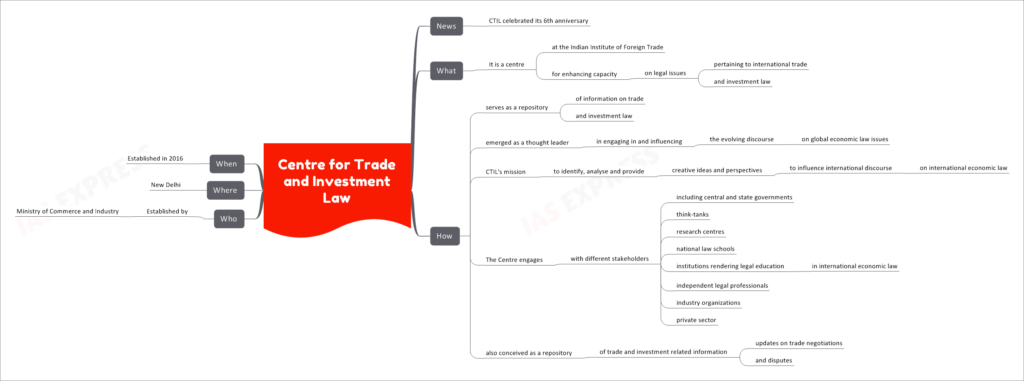[Newsbits] 09.08.2023

Green Minerals
Ghana's progressive move in adopting a new policy for the exploitation, management, and regulation of green minerals reflects a conscious effort to align with the global demand for minerals essential for clean energy transition. This strategic policy not only underscores Ghana's commitment to sustainable development but also aims to ensure the nation benefits from its valuable mineral resources.
Pioneering Green Minerals Policy
Ghana's new policy on green minerals is a significant leap forward, enabling the nation to harness the potential of minerals critical for the clean energy transition while ensuring responsible and sustainable practices.
Meeting Global Demand
The policy is formulated to meet the surging global demand for minerals vital to clean energy technologies, essential for reducing carbon emissions and fostering a sustainable future.
Clear Guidelines and Fiscal Regime
By providing clear guidelines and a robust fiscal regime for the extraction and utilization of green minerals, Ghana aims to create a structured framework for the mining sector.
Benefitting from Resources
With the new policy, Ghana aspires to ensure that the nation maximizes the benefits from its mineral resources, thus contributing to its economic growth and development.
Fostering Local Participation
The policy envisions a higher level of local participation in the green minerals value chain, promoting indigenous skill development and technological advancements.
Value Addition through Restrictions
To enhance economic value, the policy restricts the export of certain minerals in their raw state, including lithium, bauxite, and iron. This measure aims to encourage domestic processing and value addition.
Understanding Green Minerals
The Language of Transition
Green minerals encompass a spectrum of elements deemed essential for facilitating the transition to clean energy sources and reducing carbon emissions.
Defining Key Terms
Within the realm of green minerals, terms like "clean energy metals," "energy transition minerals," and "critical minerals" are significant, each playing a role in advancing sustainable energy solutions.
Minerals for the Future
Green minerals are aptly termed "minerals of the future," as they form the backbone of clean energy technologies and are indispensable for mitigating environmental impacts.
Examples in Transition
Minerals such as bauxite, cobalt, copper, lithium, granite, manganese, and nickel constitute the core of green minerals, driving innovation and powering clean energy solutions.
Notable International Actions
Namibia's Bold Step
Namibia's decision in June to ban the bulk export of unprocessed minerals, including lithium, graphite, and cobalt (DSO), demonstrates a commitment to retaining mineral value within the nation.
Zimbabwe's Protective Move
In December 2022, Zimbabwe enacted a ban on raw lithium exports to prevent the loss of mineral proceeds to foreign entities, highlighting the significance of resource retention.
The Ewoyaa Lithium Project
A Significant Milestone
Ghana's Ewoyaa lithium project stands as a pioneering endeavor, marking the country's first foray into lithium production.
Atlantic Lithium's Role
Developed by Atlantic Lithium, a Sydney-based, Africa-focused lithium exploration, and development company, the Ewoyaa lithium project represents a significant stride towards Ghana's contribution to the global clean energy transition.
Belem Declaration
The ongoing Amazon Summit has garnered attention due to the inability of leaders from eight countries to reach a consensus on a crucial goal to protect the rainforest. The elusive agreement, captured by the Belem Declaration, reflects both challenges and opportunities in safeguarding the Amazon's ecological integrity.
Navigating the Amazon Summit: The Belem Declaration
The Belem Declaration, a product of the Amazon Summit, encapsulates the aspirations and complexities of protecting the Amazon rainforest, a vital global ecosystem.
Colombia's Unsuccessful Proposal
A central highlight of the Belem Declaration was Colombia's ambitious proposal to achieve 80% protection against deforestation and degradation by 2025. However, this proposal lacked unanimous support among member countries, hampering its realization.
Unmet Goals and Focused Dialogues
The Belem Declaration fell short in setting explicit goals for forest protection, including the crucial threshold of 80% to avert a tipping point. The leaders' collective vision also failed to materialize into a commitment towards zero deforestation.
Emphasis on Sustainability and Indigenous Participation
Despite the absence of firm commitments, the Belem Declaration recognized the value of Indigenous knowledge in biodiversity conservation. The importance of involving Indigenous Peoples in decision-making and public policy formulation was acknowledged.
Solutions for the Forest Economy
The declaration underscored the necessity of diverse forest economy solutions, aimed at mitigating the dominance of agricultural commodities. It endorsed sustainable utilization of Amazon's biodiversity, promoting a balanced and ecologically responsible approach.
The Significance and Consequences
The Alarming Science
Scientists have consistently warned against allowing deforestation and degradation to surpass the 20-25% threshold. Crossing this tipping point could lead to irreversible ecosystem damage, resulting in the decline and potential collapse of the Amazon rainforest.
Implications of Unresolved Consensus
The inability to achieve consensus within the Belem Declaration has broader implications. It casts uncertainties on the realization of overarching goals and targets, including the Convention on Biological Diversity's Global Biodiversity Framework, which aimed to protect 30% of land and sea by 2030 and was agreed upon in December 2022.
The Who, Where, and Organizational Aim
Convening Leaders
The Belem Declaration emerged from leaders representing eight countries: Bolivia, Brazil, Colombia, Ecuador, Guyana, Peru, Suriname, and Venezuela. These nations converged at the Amazon Summit, an event organized by the Amazon Cooperation Treaty Organization (ACTO).
Amazon Cooperation Treaty Organization's Vision
The Amazon Summit, hosted by the Amazon Cooperation Treaty Organization (ACTO), held the core objective of advancing sustainable development in the Amazon Basin. The Belem Declaration's discourse aligns with ACTO's aim of fostering the ecological and socio-economic wellbeing of the region.
Centre for Trade and Investment Law
Celebrating its 6th anniversary, the Centre for Trade and Investment Law (CTIL) has emerged as a dynamic hub for advancing legal expertise on international trade and investment issues. Nestled within the Indian Institute of Foreign Trade, CTIL has taken on a pivotal role in influencing global economic law discourse.
Nurturing Legal Expertise: CTIL's Mandate
The Centre for Trade and Investment Law (CTIL) functions as an incubator of legal excellence within the realm of international trade and investment law. Operating under the umbrella of the Indian Institute of Foreign Trade, CTIL's core mission is to augment expertise in legal aspects related to international trade and investment.
A Resourceful Repository
CTIL serves as a knowledge repository, housing a wealth of information on matters concerning trade and investment law. This repository encompasses a broad spectrum, including insights into ongoing trade negotiations, updates on disputes, and significant developments within the international economic landscape.
A Thought Leader's Journey
Over its six years of existence, CTIL has transformed into a thought leader that actively engages with and influences the evolving global discourse on economic law. By consistently offering creative ideas and perspectives, CTIL seeks to shape international conversations concerning international economic law.
Multifaceted Engagement
CTIL's influence extends to multiple stakeholders. This engagement encompasses various entities ranging from central and state governments, think-tanks, and research centers to national law schools, educational institutions specializing in international economic law, independent legal professionals, industry organizations, and the private sector.
Establishment and Location
Ministry of Commerce and Industry's Vision
The Centre for Trade and Investment Law (CTIL) was brought into existence by the visionary initiative of the Ministry of Commerce and Industry. This establishment underscores the government's recognition of the significance of enhancing legal expertise within the domain of international trade and investment.
Home in New Delhi
CTIL has established its presence in the heart of India's capital, New Delhi. This strategic location situates the Centre within close proximity to key governmental, legal, and academic institutions, fostering synergistic collaborations and engagements.
Journey Since Inception
The Centre for Trade and Investment Law (CTIL) was inaugurated in 2016, marking the beginning of a transformative journey.
Quit India Movement
The recent homage paid by the Rajya Sabha on the 81st Anniversary of the 'Quit India Movement' serves as a poignant reminder of the significant civil disobedience movement that played a pivotal role in India's journey towards freedom from British colonial rule.
The August Movement: Demanding Freedom
The Quit India Movement, also known as the August Movement or Bharat Chodo Andolan, was a historic civil disobedience movement launched during World War II. It aimed to bring an end to British colonial rule in India and achieve full independence through nonviolent resistance.
Seeds of Discontent and Launch
The movement was born out of the strain that World War II placed on British government resources. The Indian people's patience had grown thin due to the continuing British domination. After the failure of the Cripps Mission, a resolution for the Quit India Movement was approved at the Mumbai session of the Indian National Congress.
Unwavering Resistance
The movement witnessed widespread protests that included strikes, marches, demonstrations, and acts of civil disobedience. These acts of nonviolent resistance were met with severe repression from the British colonial government, resulting in thousands of arrests, incidents of violence, and clashes with the police.
Key Leaders and their Role
Prominent leaders of the Indian National Congress, including Mahatma Gandhi, Jawaharlal Nehru, and Sardar Patel, played crucial roles in leading the movement. Despite their arrests and imprisonment, underground networks continued to operate, organizing and sustaining the resistance against British rule.
The Who, When, and Where
Launch and Leadership
The Quit India Movement was launched by Mahatma Gandhi and was championed by the Indian National Congress. This movement aimed to challenge British colonial rule through nonviolent means.
Historic Date
The movement was launched on August 8, 1942, marked by Mahatma Gandhi's iconic "Do or Die" speech, which urged the Indian populace to take decisive nonviolent action in the struggle for freedom.
Places of Significance
The movement unfolded across India, with key events taking place in various regions that highlighted the determination and bravery of the participants.
Notable Figures and Heroic Contributions
Aruna Asaf Ali: The Grand Old Lady of Independence
Aruna Asaf Ali, known as the 'Grand Old Lady' of the Independence movement, hoisted the Indian flag at the Gowalia Tank maidan on August 9, 1942, symbolizing the resolute spirit of the movement.
Matangini Hazra: A Symbol of Courage
Matangini Hazra, a 73-year-old from West Bengal, led 6,000 freedom fighters in taking over the Tamluk police station, exemplifying the diverse and fearless participation in the movement.
Kanaklata Barua: Sacrifice for the Cause
Kanaklata Barua, a 17-year-old from Assam, was part of the 'Mrityu Bahini' or death squad aiming to hoist the flag at the Gohpur Police Station. She was tragically shot dead, representing the immense sacrifices made by the youth.
Tara Rani Srivastav: Unyielding Spirit
Tara Rani Srivastav of Patna stood unfazed even after her husband was shot while raising slogans at the Siwan police station. Her strength and courage became a source of inspiration.
Sucheta Kripalani: Leading the Way
Sucheta Kripalani, India’s first woman chief minister and a professor of constitutional history, played a vital role in the movement. As the head of the Uttar Pradesh All India Mahila Congress, she was arrested for her active participation.
World University Games 2023
Recent news has brought forth a remarkable achievement by Indian athletes at the 2023 World University Games. Their exceptional performance has resulted in a historic victory that showcases their dedication and talent on the international stage.
FISU World University Games 2023: Celebrating Excellence
The FISU World University Games 2023, also known as the Universiade, is a biennial international multi-sport event that brings together university athletes from around the world. This prestigious event, now in its 31st edition, serves as a platform for young athletes to demonstrate their sporting prowess and compete at a global level.
The 2023 World University Games: Unveiling the Achievements
The 31st edition of the World University Games, held in Chengdu, China, has witnessed a momentous achievement by Indian athletes. This event, organized by the Fédération Internationale du Sport Universitaire (FISU), has seen a groundbreaking performance by the Indian contingent that will be etched in history.
Indian Athletes Scripted History
Indian athletes participating in the 2023 World University Games have achieved their best-ever performance at this grand event. The exemplary dedication and hard work put forth by the athletes have propelled India to an unprecedented level of success, with a notable tally of medals.
Unprecedented Medal Haul
The Indian contingent has garnered a total of 26 medals, which includes a remarkable haul of 11 gold medals, 5 silver medals, and 10 bronze medals. This exceptional achievement underscores the talent and determination of the Indian athletes who have displayed their excellence across various disciplines.
The Road to Glory: Evolution of the World University Games
The World University Games, previously known as the Universiade, has a rich history of promoting global sporting excellence among university athletes.
A Legacy of Sportsmanship
The Universiade, initiated in 1959, has grown over the years to become a celebrated event that unites young athletes in the spirit of competition and camaraderie. The evolution of the Universiade into the World University Games signifies its international significance and impact.
A Biennial Extravaganza
The World University Games is a biennial event, serving as a testament to the enduring commitment of the FISU to provide a platform for university athletes to showcase their talents on the global stage. The event's regularity highlights its importance in the international sports calendar.
The Previous Chapter: World University Games 2019
2019 Naples Edition: Japan's Triumph
The 2019 edition of the World University Games held in Naples saw Japan emerge as the top-performing nation with an impressive tally of 82 medals.





